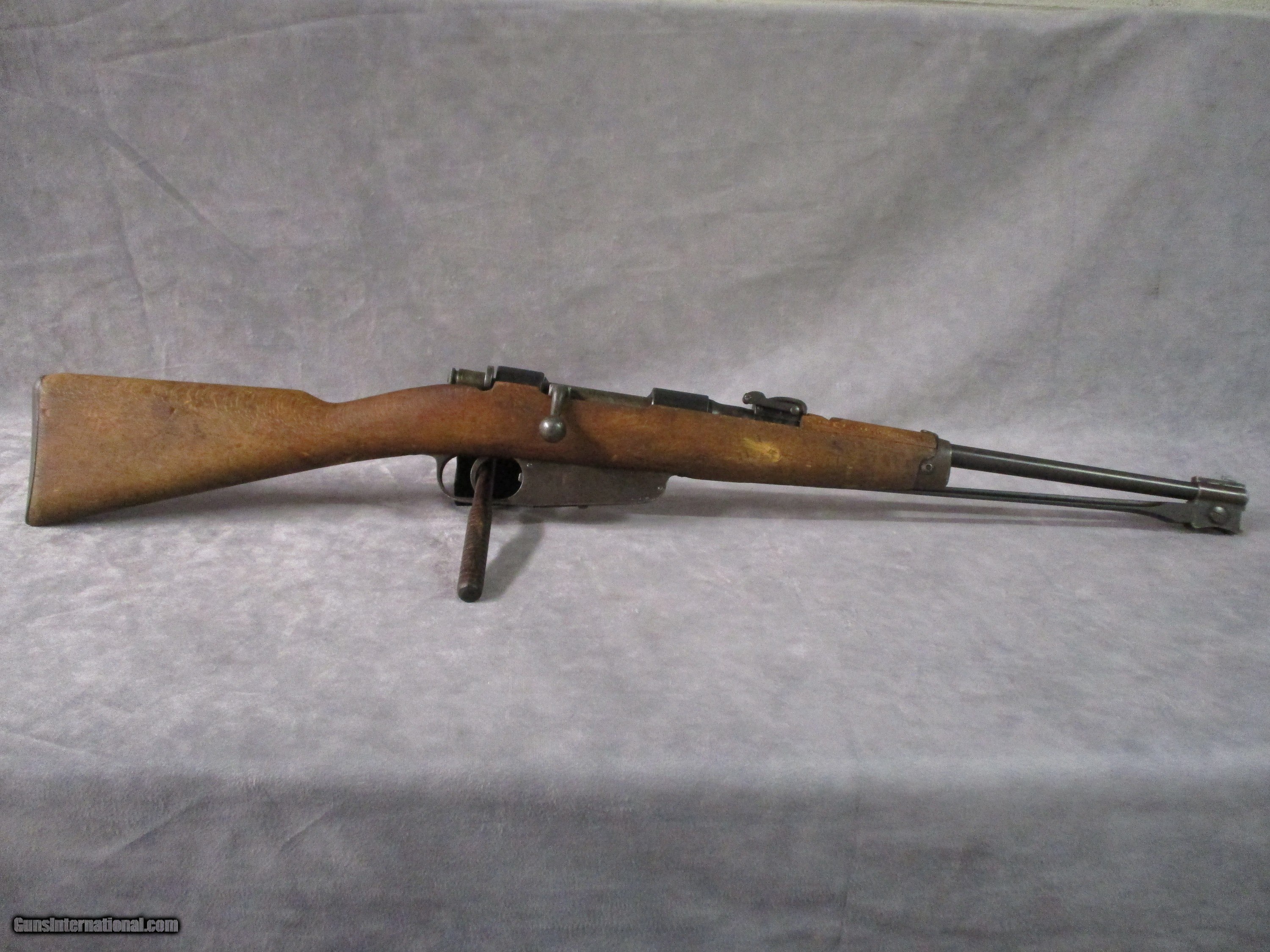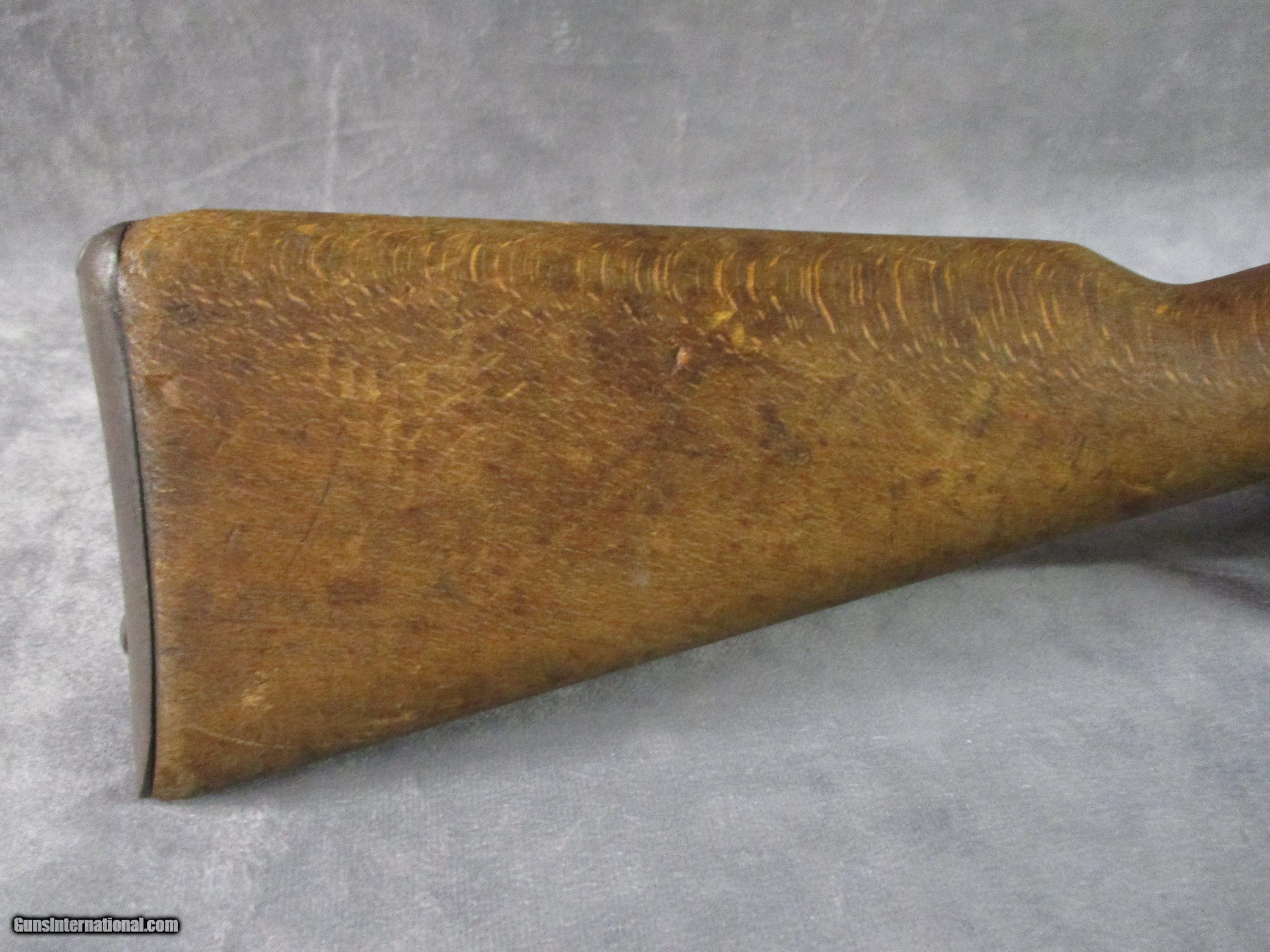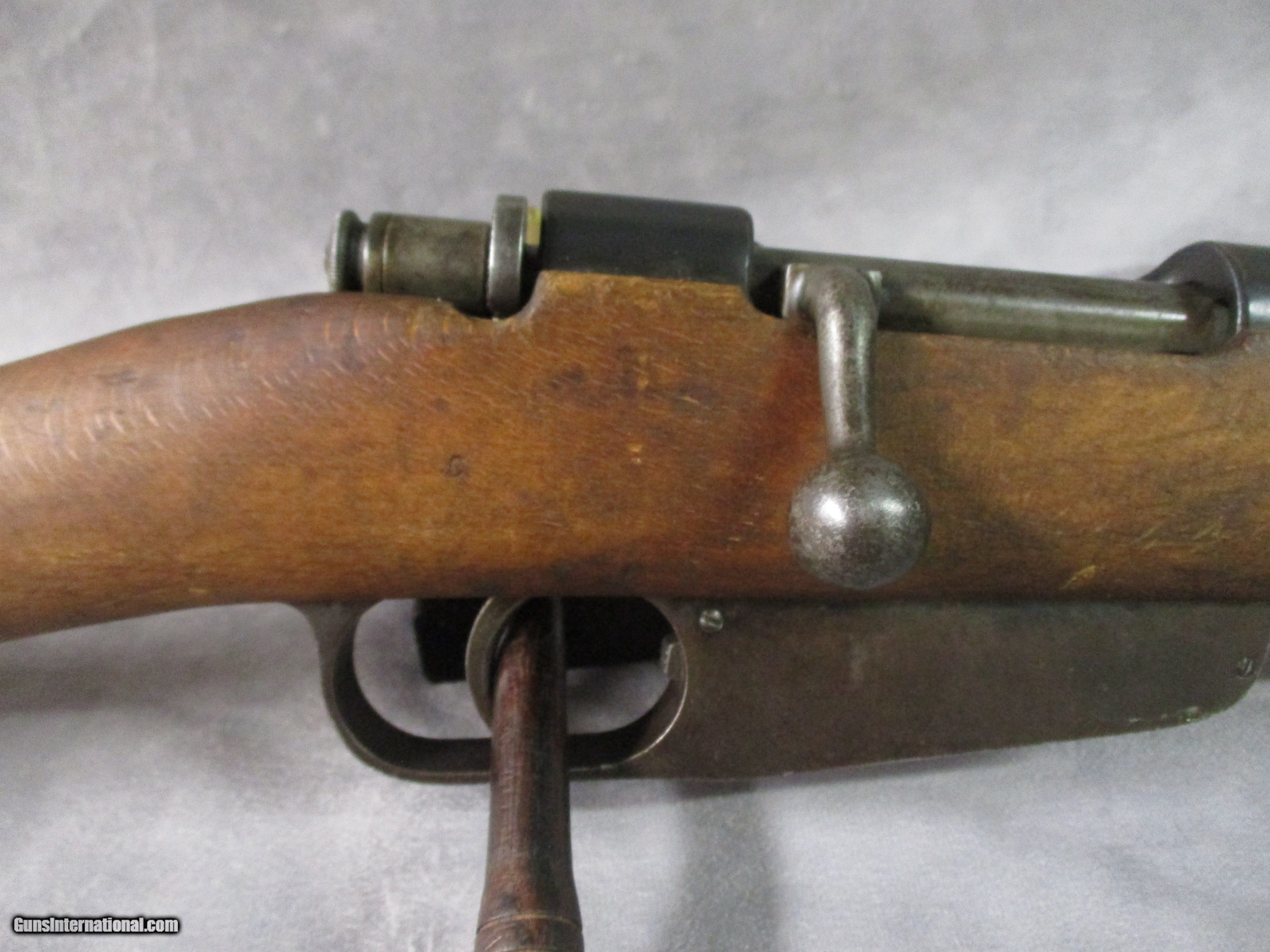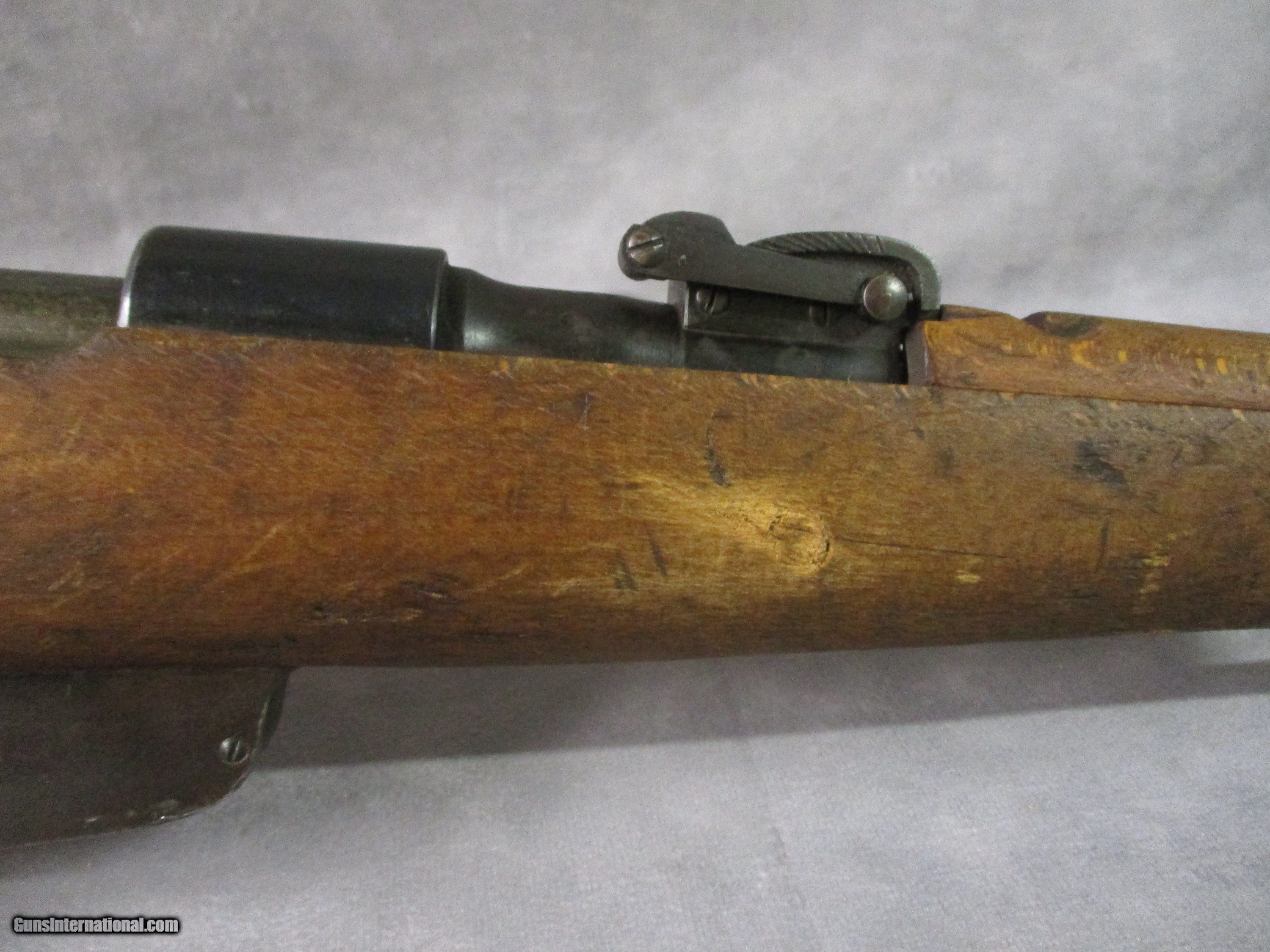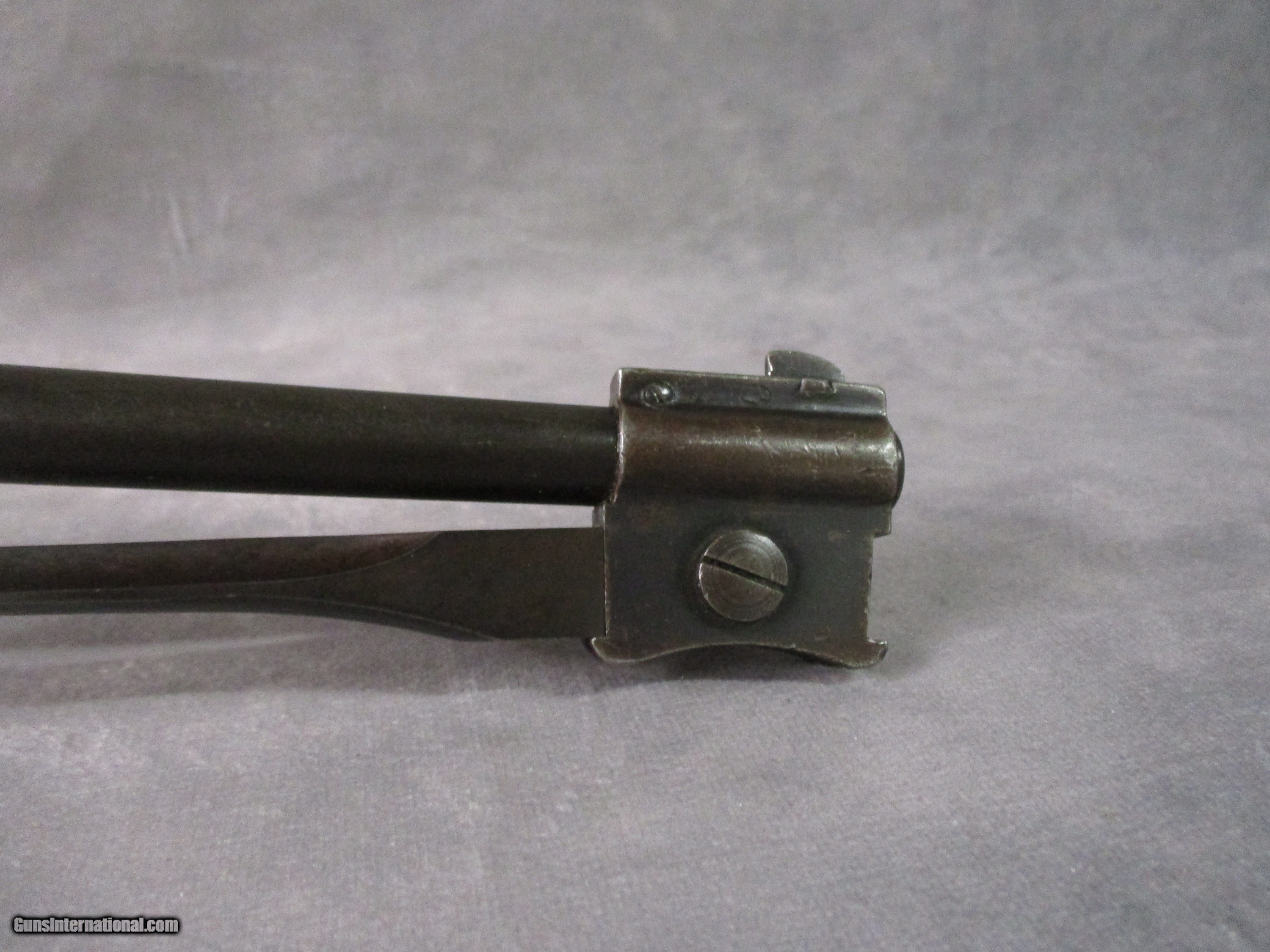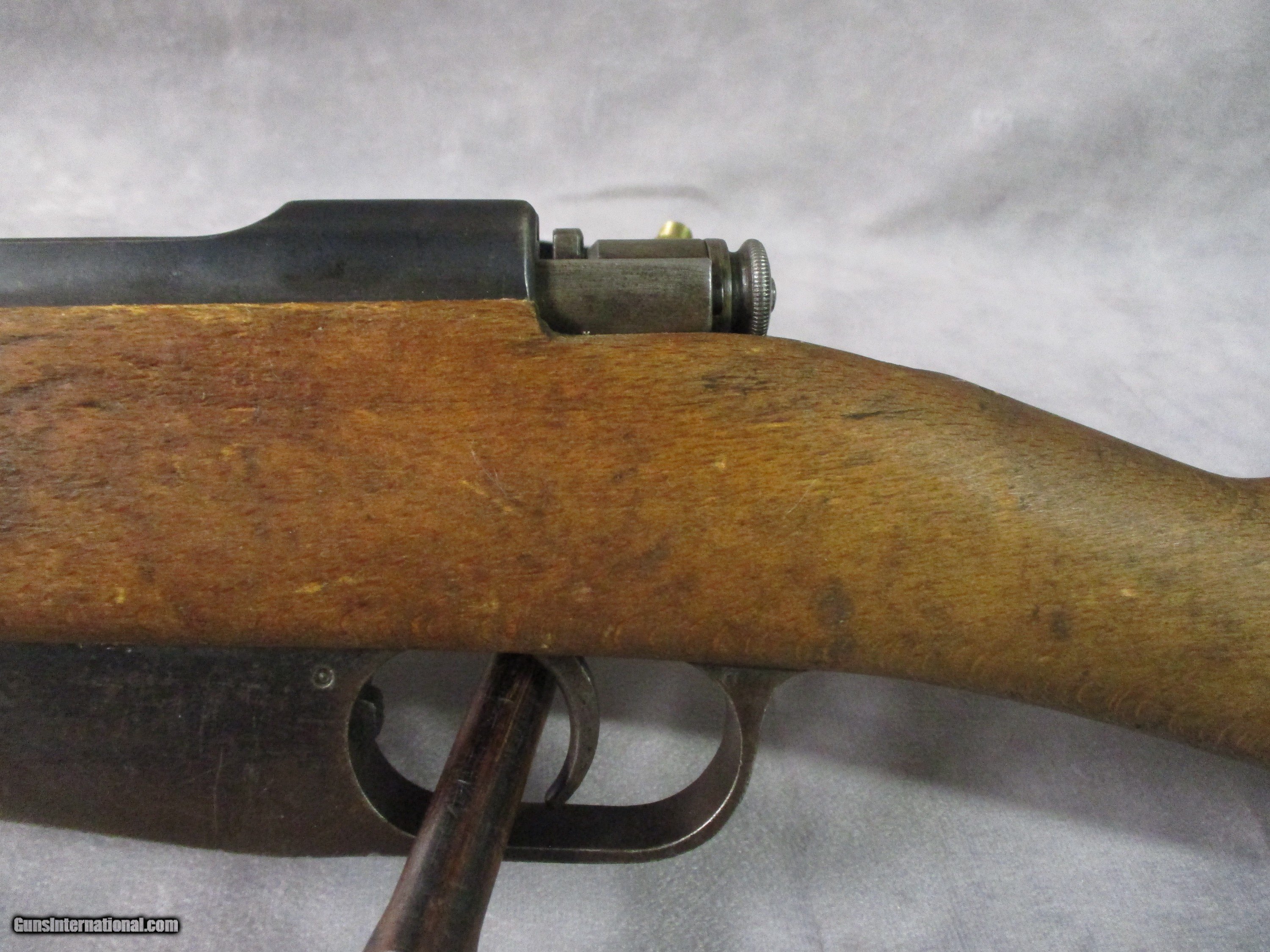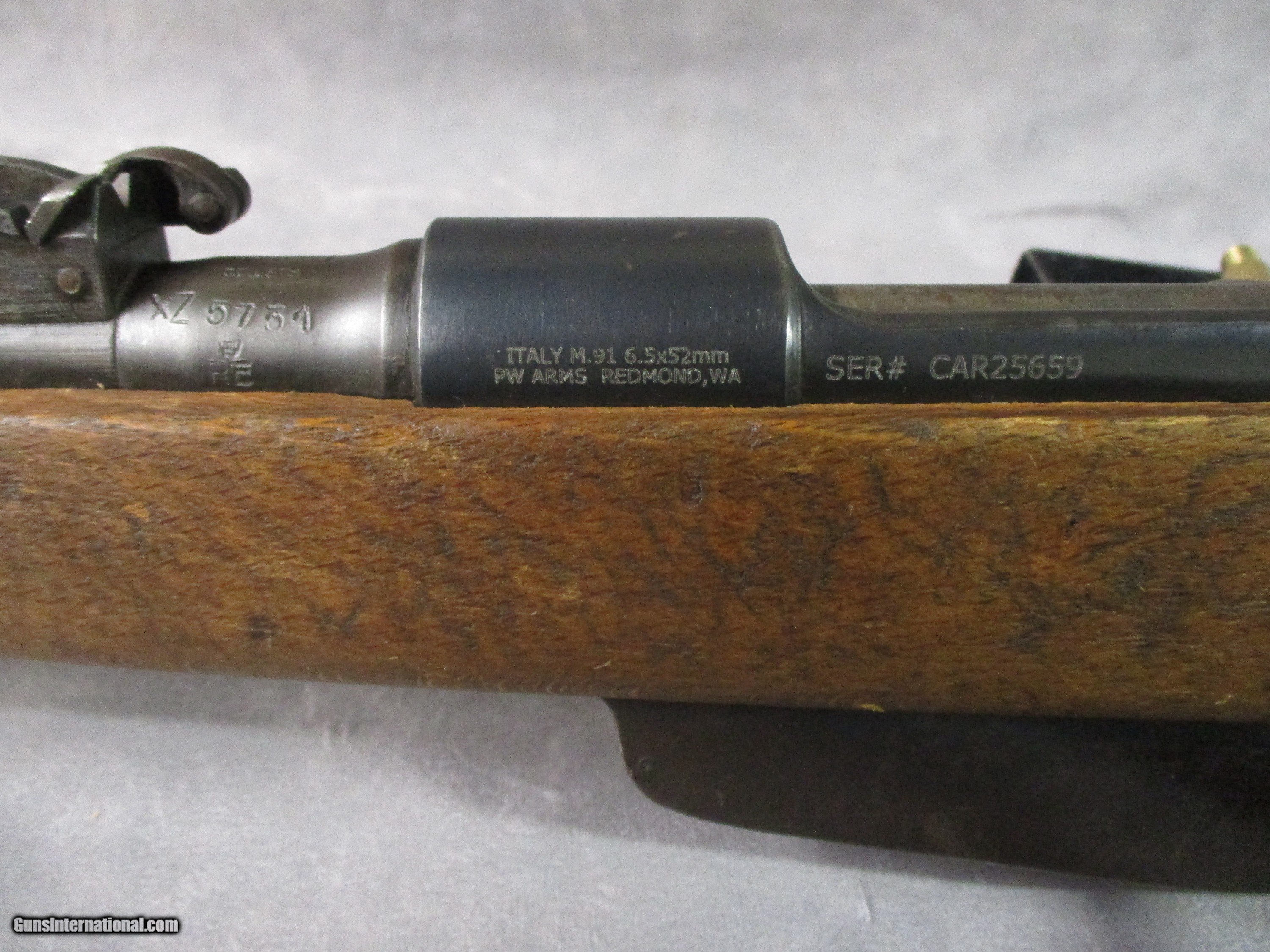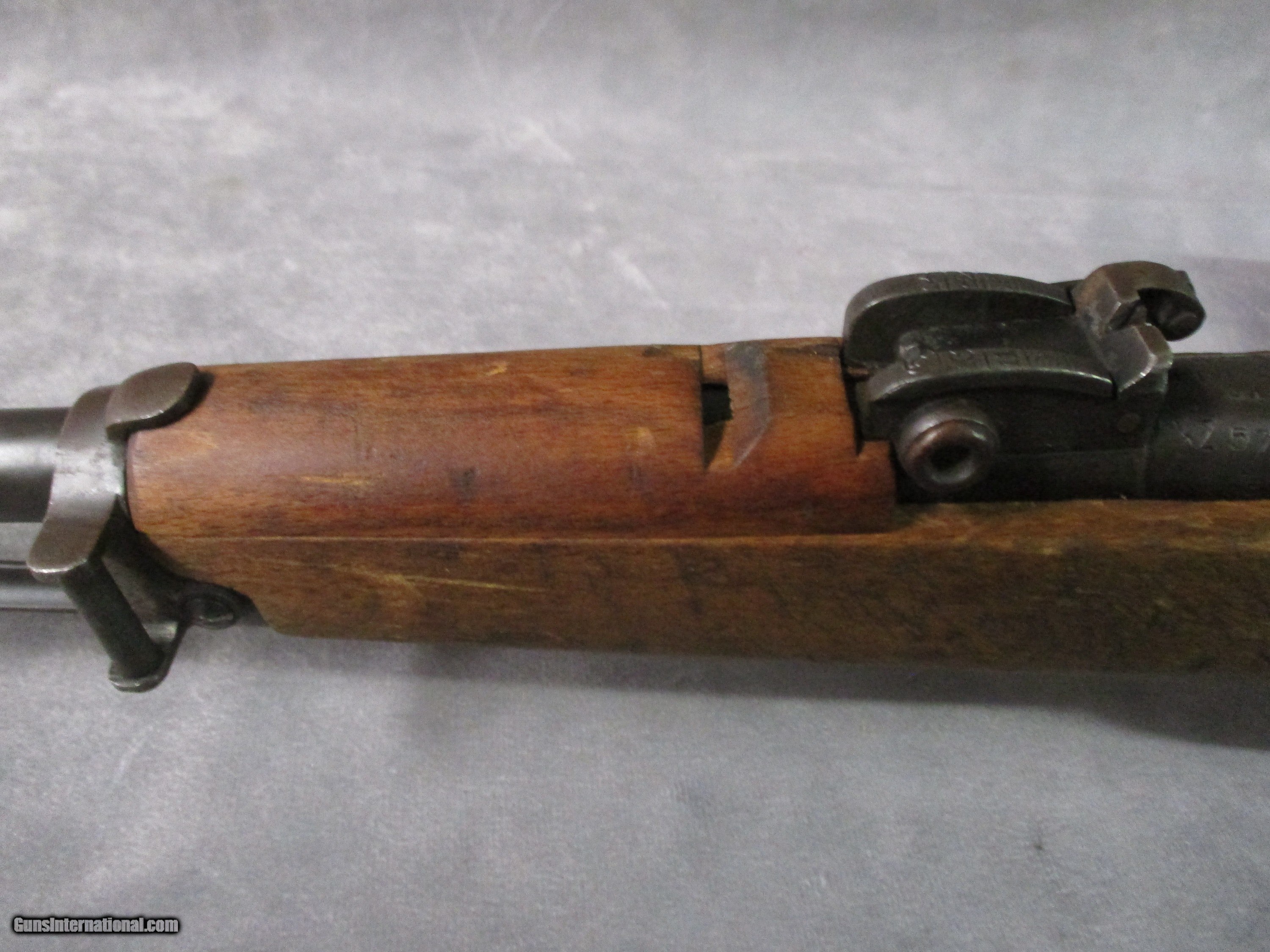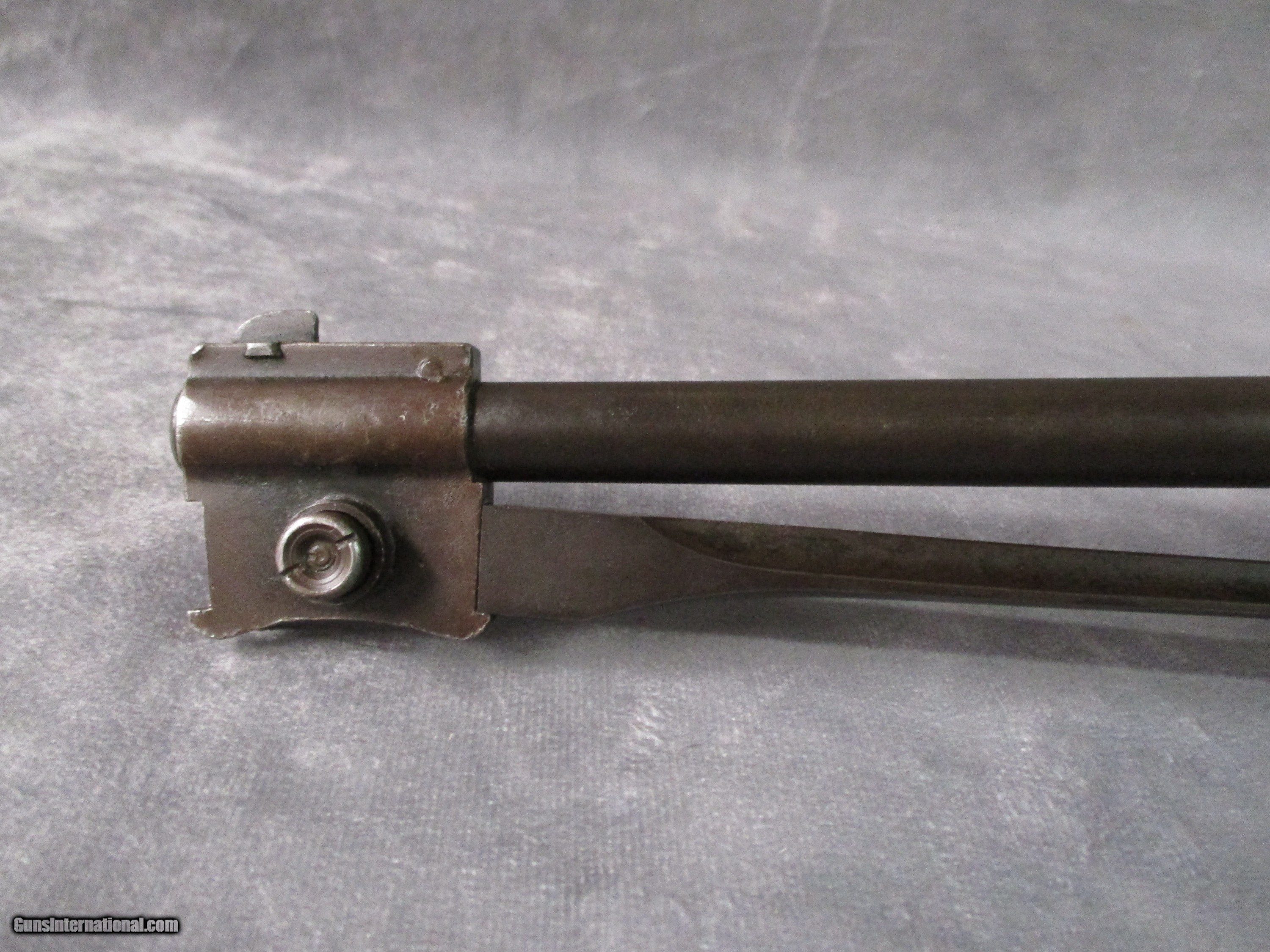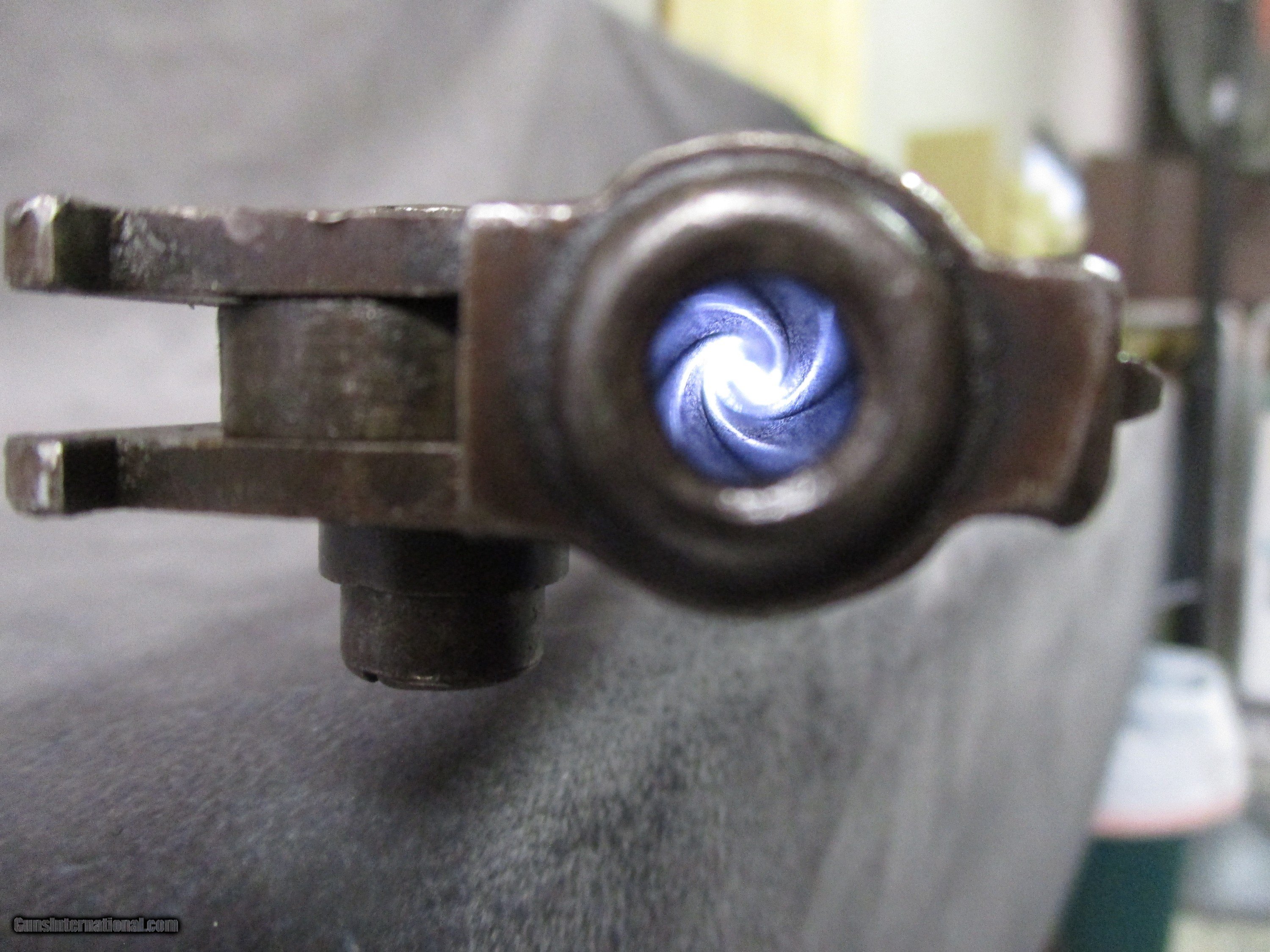Your Session is Ending
 The server has not detected any activity for the last 3 hours.
For your security, your session will expire in 2 minutes and you will be redirected to the Sign In page.
Would you like to stay signed in?
The server has not detected any activity for the last 3 hours.
For your security, your session will expire in 2 minutes and you will be redirected to the Sign In page.
Would you like to stay signed in?
Carcano Model 1891 Moschetto Cavalry Carbine Made 1942
Carcano Model 1891 Moschetto Cavalry Carbine Made 1942
Guns International #: 102528388
Seller's Inventory #: 2312-0069
Category - Military Rifles - Non-US
- Military Arms
Seller's Information
When emailing or calling sellers direct,
please mention that you saw their listing on GunsInternational.com
Seller: Shooter's Supply, LLC.
Member Since: 3/16/16
First Name: Patrick
Last Name: Brown
State:
Tennessee
Zip: 37343
Country: United States
Phone:
(423) 875-4868
Active Listings: 26
Total Listings: 1376
Seller Type: FFL Dealer
Return Policy: 3 day inspection and return policy on used guns and accessories. No returns on new firearms.
We normally ship USPS Priority Mail which should be 2-day ship. Shipping is actual cost with a minimum of $30.00 for pistols and $50.00 for rifles/shotguns to ship to most of the 48 contiguous states. Shipping to Alaska may require an extra fee. Shipping insurance is available upon request for an extra fee. We cannot do international sales. As of November 2019, we no longer ship guns to California and Hawaii.
We normally ship USPS Priority Mail which should be 2-day ship. Shipping is actual cost with a minimum of $30.00 for pistols and $50.00 for rifles/shotguns to ship to most of the 48 contiguous states. Shipping to Alaska may require an extra fee. Shipping insurance is available upon request for an extra fee. We cannot do international sales. As of November 2019, we no longer ship guns to California and Hawaii.
Payment Methods: Visa, Master Card, American Express, USPS Money Order. NO CREDIT CARD FEES!!!
About Us: We are a small family owned business located in Hixson, Tennessee. Do you have firearms at home collecting dust? We have a lively consignment business. Our fee is 20% with a $50 minimum. Firearms are consigned for a an average period of 180 days but the length of period is negotiable. We also do handgun carry permit classes for the state of Tennessee. We have a nice indoor shooting range with reasonable rates. Please check us out at shooterssupply.
Carcano Model 1891 Moschetto Cavalry Carbine Made 1942
Description:
The Carcano rifle is a fairly well known rifle that saw service in both world wars among other conflicts. It is perhaps mostly known in the U.S. for its role in the assassination of J.F.K. However, there are many aspects about the Carcano that are often overshadowed by the myths which spawned from that event. Worse still, a reluctance on the part of most ammo manufacturers to produce bullets of the correct size hurts the rifle’s reputation further. The Carcano was original introduced in 1891 and adopted by Italy as the standard service rifle in 1892. It is named after its designer, Salvatore Carcano. The frequently seen “Mannlicher-Carcano” moniker is incorrect, and Mannlicher had nothing to do with the design of the rifle itself, only the clip that it used to feed the cartridges into the rifle. The original rifle, like many military arms of its era, was very long with a barrel no less than 30.6 inches in length. However, the Italians realized the need for a shorter rifle for use by artillery and cavalry troops and so the M1891 Cavalry Carbine (“Moschetto”) and Model 1891 TS (“Truppe Special”) were produced, both with much shorter 18-inch barrels. The former used a folding bayonet attached to the muzzle itself, while the latter initially used a bayonet unique to the model, but later modified to utilize the same bayonet as the standard rifle. One thing that makes these and later carbine models of the Carcano stand out is their size – they are much smaller than that of other nations. This makes them handy and easy to use. Another factor in the Carcano’s favor is its ammo capacity. It uses a 6-round Mannlicher clip rather than the standard five found in most other countries. Also, the fairly small clip and cartridge made it easier to load the rifle and keep up a sustained fire than rifles with larger cartridges. Only the Lee-Enfield could keep up a greater sustained fire thanks to its 10 round magazine. The small dimensions of the 6.5 Carcano also allowed Italian solders to carry more rounds overall than their potential adversaries. The drawback to the Carcano at the time was the Italian Army never switched from heavy round-nosed bullets to a lighter, pointed bullet like everyone else. Instead, they tried switching to a new cartridge, the 7.35mm Carcano which used a lighter, pointed bullet. Lack of money and World War II forced the Italian Army to stick to the older 6.5mm cartridge. The Carcano rifle uses what is called “gain twist” rifling wherein the twist near the chamber is slow and the rate increases as you move closer to the muzzle. The idea behind this is with the twist being less at the breech end, this results in less friction to the bullet. As such, the bullet starts off easier and more quickly, giving the powder less time to burn in front of the chamber, resulting in less fouling in the bore than in a barrel of uniform twist. The Carcano does not use a traditional “6.5” or .264-inch bullet like other 6.5 mm rifles, such as the Swedish Mauser and Japanese Type 38 Arisaka, and instead uses a .268-inch projectile. Today, most manufacturers load 6.5mm Carcano ammo with the typical .264-inch bullet, resulting in acceptable but not superb accuracy. Prvi Partizan produces both bullets and loaded ammunition which use the correct .268-inch diameter in two forms: a 139gr FMJ BT (full metal jacket boat tail) (Mfg. Part # B-603), and a 123 gr SP RN (soft point round nose) (Mfg. Part # B-352).
The rifle shown here is the Model 1891 Cavalry Carbine which is a more modern interpretation of its Italian name, the Moschetto Modello 1891. Moschetto is Italian for Musketoon. The designation did not include an indication by cavalry troops specifically, mainly because it was intended for issue not only to them but to other troop types as well, such as the Carabinieri Reali, Bersaglieri Ciclisti (Cyclists, or Bicycle Troops), and later to paratroopers. Despite the introduction of the later M1938 carbine rifles as well as many conversions of the standard rifle into the Model 1891/24 and 1891/28 carbines, the Moschetto M1891 remained in production all the way up to 1944. The easiest way to differentiate them from the later M1938 carbines is the M1891’s adjustable rear sight, regardless of where or when they were made. This example is fairly good shape for its age. It was made by FNA Brescia in 1942 according to the marking on the receiver. Next to the number "42" is the Roman numeral 20 (“XX”). This number indicates the number of years since the start of Mussolini’s fascist regime in 1922. Despite having PW Arms import markings on the lower left side of the receiver, the rifle still retains its bayonet (normally, in order to pass import restrictions, the bayonet is removed). The wood is slightly rough with dings in it in certain places. This is normal for these rifles. One without significant wear would be the exception rather than the rule. The serial number in the wood matches the rifle’s original serial number on the barrel. The rear of the handguard has a crack in it. The finish has turned to a patina in some places though the receiver retains a good amount of the original bluing. The metal around the front sight/bayonet area is a little rough around the edges. The front guard screw is slightly burred on the edges of the notch, but not buggered. The action is a little stiff, but not terrible. It becomes much easier to operate with practice. The bore is in good shape and while it exhibits some pitting, retains deep rifling and should provide good accuracy. Remember, better accuracy can be achieved with these rifles when using bullets of the correct diameter. Although not pictured here, this rifle does come with two brass 6-round clip.
SOLD
Rifle Caliber: 6.5x52mm Mannlicher-Carcano
Manufacturer: FNA Brescia
Model: Moschetto Modello 1891
Serial Number: CAR25659 (PW Arms s/n), XZ5731 (original)
Bore: 4 grooves, Gain Twist rifling
Ejectors: Manual ejection via operation of the bolt
Condition: Good
Barrels: Nickel steel
Barrel Type: Carbine type with integral bayonet
Action: Bolt action rifle, Carcano action
Triggers: Standard
Stock: Wood, straight grip
Fore End: Wood
Butt Pad: Metal plate
LOP: 13.5 inches (343 mm)
Finish: Blued/Patina
Weight: 7.5 lbs. with sling
Sights: Elevator v-notch rear, blade front sight, sight radius 14.625 inches (371.475 mm)
Extras: 2 x 6-round en-bloc clips
Description:
The Carcano rifle is a fairly well known rifle that saw service in both world wars among other conflicts. It is perhaps mostly known in the U.S. for its role in the assassination of J.F.K. However, there are many aspects about the Carcano that are often overshadowed by the myths which spawned from that event. Worse still, a reluctance on the part of most ammo manufacturers to produce bullets of the correct size hurts the rifle’s reputation further. The Carcano was original introduced in 1891 and adopted by Italy as the standard service rifle in 1892. It is named after its designer, Salvatore Carcano. The frequently seen “Mannlicher-Carcano” moniker is incorrect, and Mannlicher had nothing to do with the design of the rifle itself, only the clip that it used to feed the cartridges into the rifle. The original rifle, like many military arms of its era, was very long with a barrel no less than 30.6 inches in length. However, the Italians realized the need for a shorter rifle for use by artillery and cavalry troops and so the M1891 Cavalry Carbine (“Moschetto”) and Model 1891 TS (“Truppe Special”) were produced, both with much shorter 18-inch barrels. The former used a folding bayonet attached to the muzzle itself, while the latter initially used a bayonet unique to the model, but later modified to utilize the same bayonet as the standard rifle. One thing that makes these and later carbine models of the Carcano stand out is their size – they are much smaller than that of other nations. This makes them handy and easy to use. Another factor in the Carcano’s favor is its ammo capacity. It uses a 6-round Mannlicher clip rather than the standard five found in most other countries. Also, the fairly small clip and cartridge made it easier to load the rifle and keep up a sustained fire than rifles with larger cartridges. Only the Lee-Enfield could keep up a greater sustained fire thanks to its 10 round magazine. The small dimensions of the 6.5 Carcano also allowed Italian solders to carry more rounds overall than their potential adversaries. The drawback to the Carcano at the time was the Italian Army never switched from heavy round-nosed bullets to a lighter, pointed bullet like everyone else. Instead, they tried switching to a new cartridge, the 7.35mm Carcano which used a lighter, pointed bullet. Lack of money and World War II forced the Italian Army to stick to the older 6.5mm cartridge. The Carcano rifle uses what is called “gain twist” rifling wherein the twist near the chamber is slow and the rate increases as you move closer to the muzzle. The idea behind this is with the twist being less at the breech end, this results in less friction to the bullet. As such, the bullet starts off easier and more quickly, giving the powder less time to burn in front of the chamber, resulting in less fouling in the bore than in a barrel of uniform twist. The Carcano does not use a traditional “6.5” or .264-inch bullet like other 6.5 mm rifles, such as the Swedish Mauser and Japanese Type 38 Arisaka, and instead uses a .268-inch projectile. Today, most manufacturers load 6.5mm Carcano ammo with the typical .264-inch bullet, resulting in acceptable but not superb accuracy. Prvi Partizan produces both bullets and loaded ammunition which use the correct .268-inch diameter in two forms: a 139gr FMJ BT (full metal jacket boat tail) (Mfg. Part # B-603), and a 123 gr SP RN (soft point round nose) (Mfg. Part # B-352).
The rifle shown here is the Model 1891 Cavalry Carbine which is a more modern interpretation of its Italian name, the Moschetto Modello 1891. Moschetto is Italian for Musketoon. The designation did not include an indication by cavalry troops specifically, mainly because it was intended for issue not only to them but to other troop types as well, such as the Carabinieri Reali, Bersaglieri Ciclisti (Cyclists, or Bicycle Troops), and later to paratroopers. Despite the introduction of the later M1938 carbine rifles as well as many conversions of the standard rifle into the Model 1891/24 and 1891/28 carbines, the Moschetto M1891 remained in production all the way up to 1944. The easiest way to differentiate them from the later M1938 carbines is the M1891’s adjustable rear sight, regardless of where or when they were made. This example is fairly good shape for its age. It was made by FNA Brescia in 1942 according to the marking on the receiver. Next to the number "42" is the Roman numeral 20 (“XX”). This number indicates the number of years since the start of Mussolini’s fascist regime in 1922. Despite having PW Arms import markings on the lower left side of the receiver, the rifle still retains its bayonet (normally, in order to pass import restrictions, the bayonet is removed). The wood is slightly rough with dings in it in certain places. This is normal for these rifles. One without significant wear would be the exception rather than the rule. The serial number in the wood matches the rifle’s original serial number on the barrel. The rear of the handguard has a crack in it. The finish has turned to a patina in some places though the receiver retains a good amount of the original bluing. The metal around the front sight/bayonet area is a little rough around the edges. The front guard screw is slightly burred on the edges of the notch, but not buggered. The action is a little stiff, but not terrible. It becomes much easier to operate with practice. The bore is in good shape and while it exhibits some pitting, retains deep rifling and should provide good accuracy. Remember, better accuracy can be achieved with these rifles when using bullets of the correct diameter. Although not pictured here, this rifle does come with two brass 6-round clip.
SOLD
Rifle Caliber: 6.5x52mm Mannlicher-Carcano
Manufacturer: FNA Brescia
Model: Moschetto Modello 1891
Serial Number: CAR25659 (PW Arms s/n), XZ5731 (original)
Bore: 4 grooves, Gain Twist rifling
Ejectors: Manual ejection via operation of the bolt
Condition: Good
Barrels: Nickel steel
Barrel Type: Carbine type with integral bayonet
Action: Bolt action rifle, Carcano action
Triggers: Standard
Stock: Wood, straight grip
Fore End: Wood
Butt Pad: Metal plate
LOP: 13.5 inches (343 mm)
Finish: Blued/Patina
Weight: 7.5 lbs. with sling
Sights: Elevator v-notch rear, blade front sight, sight radius 14.625 inches (371.475 mm)
Extras: 2 x 6-round en-bloc clips
Click Photo to Enlarge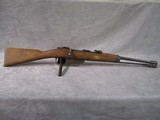
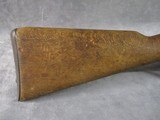
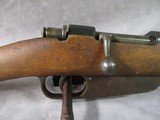
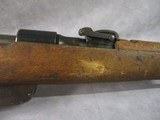
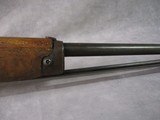
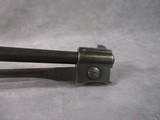
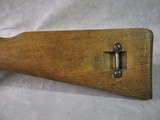

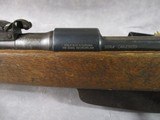
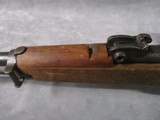

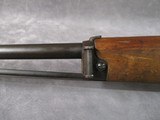
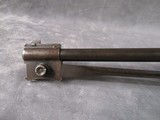
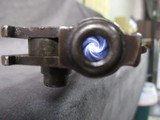
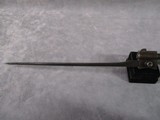
|
Guns International #: 102528388
Category - Military Rifles - Non-US
- Military Arms
Seller's Information
When emailing or calling sellers direct,
please mention that you saw their listing on GunsInternational.com
Seller: Shooter's Supply, LLC.
Member Since: 3/16/16
First Name: Patrick
Last Name: Brown
State:
Tennessee
Zip: 37343
Country: United States
Phone:
(423) 875-4868
Active Listings: 26
Total Listings: 1376
Seller Type: FFL Dealer
Return Policy: 3 day inspection and return policy on used guns and accessories. No returns on new firearms.
We normally ship USPS Priority Mail which should be 2-day ship. Shipping is actual cost with a minimum of $30.00 for pistols and $50.00 for rifles/shotguns to ship to most of the 48 contiguous states. Shipping to Alaska may require an extra fee. Shipping insurance is available upon request for an extra fee. We cannot do international sales. As of November 2019, we no longer ship guns to California and Hawaii. Payment Methods: Visa, Master Card, American Express, USPS Money Order. NO CREDIT CARD FEES!!!
About Us: We are a small family owned business located in Hixson, Tennessee. Do you have firearms at home collecting dust? We have a lively consignment business. Our fee is 20% with a $50 minimum. Firearms are consigned for a an average period of 180 days but the length of period is negotiable. We also do handgun carry permit classes for the state of Tennessee. We have a nice indoor shooting range with reasonable rates. Please check us out at shooterssupply.
Carcano Model 1891 Moschetto Cavalry Carbine Made 1942
Description: The Carcano rifle is a fairly well known rifle that saw service in both world wars among other conflicts. It is perhaps mostly known in the U.S. for its role in the assassination of J.F.K. However, there are many aspects about the Carcano that are often overshadowed by the myths which spawned from that event. Worse still, a reluctance on the part of most ammo manufacturers to produce bullets of the correct size hurts the rifle’s reputation further. The Carcano was original introduced in 1891 and adopted by Italy as the standard service rifle in 1892. It is named after its designer, Salvatore Carcano. The frequently seen “Mannlicher-Carcano” moniker is incorrect, and Mannlicher had nothing to do with the design of the rifle itself, only the clip that it used to feed the cartridges into the rifle. The original rifle, like many military arms of its era, was very long with a barrel no less than 30.6 inches in length. However, the Italians realized the need for a shorter rifle for use by artillery and cavalry troops and so the M1891 Cavalry Carbine (“Moschetto”) and Model 1891 TS (“Truppe Special”) were produced, both with much shorter 18-inch barrels. The former used a folding bayonet attached to the muzzle itself, while the latter initially used a bayonet unique to the model, but later modified to utilize the same bayonet as the standard rifle. One thing that makes these and later carbine models of the Carcano stand out is their size – they are much smaller than that of other nations. This makes them handy and easy to use. Another factor in the Carcano’s favor is its ammo capacity. It uses a 6-round Mannlicher clip rather than the standard five found in most other countries. Also, the fairly small clip and cartridge made it easier to load the rifle and keep up a sustained fire than rifles with larger cartridges. Only the Lee-Enfield could keep up a greater sustained fire thanks to its 10 round magazine. The small dimensions of the 6.5 Carcano also allowed Italian solders to carry more rounds overall than their potential adversaries. The drawback to the Carcano at the time was the Italian Army never switched from heavy round-nosed bullets to a lighter, pointed bullet like everyone else. Instead, they tried switching to a new cartridge, the 7.35mm Carcano which used a lighter, pointed bullet. Lack of money and World War II forced the Italian Army to stick to the older 6.5mm cartridge. The Carcano rifle uses what is called “gain twist” rifling wherein the twist near the chamber is slow and the rate increases as you move closer to the muzzle. The idea behind this is with the twist being less at the breech end, this results in less friction to the bullet. As such, the bullet starts off easier and more quickly, giving the powder less time to burn in front of the chamber, resulting in less fouling in the bore than in a barrel of uniform twist. The Carcano does not use a traditional “6.5” or .264-inch bullet like other 6.5 mm rifles, such as the Swedish Mauser and Japanese Type 38 Arisaka, and instead uses a .268-inch projectile. Today, most manufacturers load 6.5mm Carcano ammo with the typical .264-inch bullet, resulting in acceptable but not superb accuracy. Prvi Partizan produces both bullets and loaded ammunition which use the correct .268-inch diameter in two forms: a 139gr FMJ BT (full metal jacket boat tail) (Mfg. Part # B-603), and a 123 gr SP RN (soft point round nose) (Mfg. Part # B-352). The rifle shown here is the Model 1891 Cavalry Carbine which is a more modern interpretation of its Italian name, the Moschetto Modello 1891. Moschetto is Italian for Musketoon. The designation did not include an indication by cavalry troops specifically, mainly because it was intended for issue not only to them but to other troop types as well, such as the Carabinieri Reali, Bersaglieri Ciclisti (Cyclists, or Bicycle Troops), and later to paratroopers. Despite the introduction of the later M1938 carbine rifles as well as many conversions of the standard rifle into the Model 1891/24 and 1891/28 carbines, the Moschetto M1891 remained in production all the way up to 1944. The easiest way to differentiate them from the later M1938 carbines is the M1891’s adjustable rear sight, regardless of where or when they were made. This example is fairly good shape for its age. It was made by FNA Brescia in 1942 according to the marking on the receiver. Next to the number "42" is the Roman numeral 20 (“XX”). This number indicates the number of years since the start of Mussolini’s fascist regime in 1922. Despite having PW Arms import markings on the lower left side of the receiver, the rifle still retains its bayonet (normally, in order to pass import restrictions, the bayonet is removed). The wood is slightly rough with dings in it in certain places. This is normal for these rifles. One without significant wear would be the exception rather than the rule. The serial number in the wood matches the rifle’s original serial number on the barrel. The rear of the handguard has a crack in it. The finish has turned to a patina in some places though the receiver retains a good amount of the original bluing. The metal around the front sight/bayonet area is a little rough around the edges. The front guard screw is slightly burred on the edges of the notch, but not buggered. The action is a little stiff, but not terrible. It becomes much easier to operate with practice. The bore is in good shape and while it exhibits some pitting, retains deep rifling and should provide good accuracy. Remember, better accuracy can be achieved with these rifles when using bullets of the correct diameter. Although not pictured here, this rifle does come with two brass 6-round clip. SOLD Rifle Caliber: 6.5x52mm Mannlicher-Carcano Manufacturer: FNA Brescia Model: Moschetto Modello 1891 Serial Number: CAR25659 (PW Arms s/n), XZ5731 (original) Bore: 4 grooves, Gain Twist rifling Ejectors: Manual ejection via operation of the bolt Condition: Good Barrels: Nickel steel Barrel Type: Carbine type with integral bayonet Action: Bolt action rifle, Carcano action Triggers: Standard Stock: Wood, straight grip Fore End: Wood Butt Pad: Metal plate LOP: 13.5 inches (343 mm) Finish: Blued/Patina Weight: 7.5 lbs. with sling Sights: Elevator v-notch rear, blade front sight, sight radius 14.625 inches (371.475 mm) Extras: 2 x 6-round en-bloc clips |
Guns International #: 102528388
Seller's Inventory #: 2312-0069
Category - Military Rifles - Non-US
- Military Arms
Seller's Information
When emailing or calling sellers direct,
please mention that you saw their listing on GunsInternational.com
Seller: Shooter's Supply, LLC.
Member Since: 3/16/16
First Name: Patrick
Last Name: Brown
State:
Tennessee
Zip: 37343
Country: United States
Phone:
(423) 875-4868
Active Listings: 26
Total Listings: 1376
Seller Type: FFL Dealer
Return Policy: 3 day inspection and return policy on used guns and accessories. No returns on new firearms.
We normally ship USPS Priority Mail which should be 2-day ship. Shipping is actual cost with a minimum of $30.00 for pistols and $50.00 for rifles/shotguns to ship to most of the 48 contiguous states. Shipping to Alaska may require an extra fee. Shipping insurance is available upon request for an extra fee. We cannot do international sales. As of November 2019, we no longer ship guns to California and Hawaii.
We normally ship USPS Priority Mail which should be 2-day ship. Shipping is actual cost with a minimum of $30.00 for pistols and $50.00 for rifles/shotguns to ship to most of the 48 contiguous states. Shipping to Alaska may require an extra fee. Shipping insurance is available upon request for an extra fee. We cannot do international sales. As of November 2019, we no longer ship guns to California and Hawaii.
Payment Methods: Visa, Master Card, American Express, USPS Money Order. NO CREDIT CARD FEES!!!
About Us: We are a small family owned business located in Hixson, Tennessee. Do you have firearms at home collecting dust? We have a lively consignment business. Our fee is 20% with a $50 minimum. Firearms are consigned for a an average period of 180 days but the length of period is negotiable. We also do handgun carry permit classes for the state of Tennessee. We have a nice indoor shooting range with reasonable rates. Please check us out at shooterssupply.
Carcano Model 1891 Moschetto Cavalry Carbine Made 1942
Description:
The Carcano rifle is a fairly well known rifle that saw service in both world wars among other conflicts. It is perhaps mostly known in the U.S. for its role in the assassination of J.F.K. However, there are many aspects about the Carcano that are often overshadowed by the myths which spawned from that event. Worse still, a reluctance on the part of most ammo manufacturers to produce bullets of the correct size hurts the rifle’s reputation further. The Carcano was original introduced in 1891 and adopted by Italy as the standard service rifle in 1892. It is named after its designer, Salvatore Carcano. The frequently seen “Mannlicher-Carcano” moniker is incorrect, and Mannlicher had nothing to do with the design of the rifle itself, only the clip that it used to feed the cartridges into the rifle. The original rifle, like many military arms of its era, was very long with a barrel no less than 30.6 inches in length. However, the Italians realized the need for a shorter rifle for use by artillery and cavalry troops and so the M1891 Cavalry Carbine (“Moschetto”) and Model 1891 TS (“Truppe Special”) were produced, both with much shorter 18-inch barrels. The former used a folding bayonet attached to the muzzle itself, while the latter initially used a bayonet unique to the model, but later modified to utilize the same bayonet as the standard rifle. One thing that makes these and later carbine models of the Carcano stand out is their size – they are much smaller than that of other nations. This makes them handy and easy to use. Another factor in the Carcano’s favor is its ammo capacity. It uses a 6-round Mannlicher clip rather than the standard five found in most other countries. Also, the fairly small clip and cartridge made it easier to load the rifle and keep up a sustained fire than rifles with larger cartridges. Only the Lee-Enfield could keep up a greater sustained fire thanks to its 10 round magazine. The small dimensions of the 6.5 Carcano also allowed Italian solders to carry more rounds overall than their potential adversaries. The drawback to the Carcano at the time was the Italian Army never switched from heavy round-nosed bullets to a lighter, pointed bullet like everyone else. Instead, they tried switching to a new cartridge, the 7.35mm Carcano which used a lighter, pointed bullet. Lack of money and World War II forced the Italian Army to stick to the older 6.5mm cartridge. The Carcano rifle uses what is called “gain twist” rifling wherein the twist near the chamber is slow and the rate increases as you move closer to the muzzle. The idea behind this is with the twist being less at the breech end, this results in less friction to the bullet. As such, the bullet starts off easier and more quickly, giving the powder less time to burn in front of the chamber, resulting in less fouling in the bore than in a barrel of uniform twist. The Carcano does not use a traditional “6.5” or .264-inch bullet like other 6.5 mm rifles, such as the Swedish Mauser and Japanese Type 38 Arisaka, and instead uses a .268-inch projectile. Today, most manufacturers load 6.5mm Carcano ammo with the typical .264-inch bullet, resulting in acceptable but not superb accuracy. Prvi Partizan produces both bullets and loaded ammunition which use the correct .268-inch diameter in two forms: a 139gr FMJ BT (full metal jacket boat tail) (Mfg. Part # B-603), and a 123 gr SP RN (soft point round nose) (Mfg. Part # B-352).
The rifle shown here is the Model 1891 Cavalry Carbine which is a more modern interpretation of its Italian name, the Moschetto Modello 1891. Moschetto is Italian for Musketoon. The designation did not include an indication by cavalry troops specifically, mainly because it was intended for issue not only to them but to other troop types as well, such as the Carabinieri Reali, Bersaglieri Ciclisti (Cyclists, or Bicycle Troops), and later to paratroopers. Despite the introduction of the later M1938 carbine rifles as well as many conversions of the standard rifle into the Model 1891/24 and 1891/28 carbines, the Moschetto M1891 remained in production all the way up to 1944. The easiest way to differentiate them from the later M1938 carbines is the M1891’s adjustable rear sight, regardless of where or when they were made. This example is fairly good shape for its age. It was made by FNA Brescia in 1942 according to the marking on the receiver. Next to the number "42" is the Roman numeral 20 (“XX”). This number indicates the number of years since the start of Mussolini’s fascist regime in 1922. Despite having PW Arms import markings on the lower left side of the receiver, the rifle still retains its bayonet (normally, in order to pass import restrictions, the bayonet is removed). The wood is slightly rough with dings in it in certain places. This is normal for these rifles. One without significant wear would be the exception rather than the rule. The serial number in the wood matches the rifle’s original serial number on the barrel. The rear of the handguard has a crack in it. The finish has turned to a patina in some places though the receiver retains a good amount of the original bluing. The metal around the front sight/bayonet area is a little rough around the edges. The front guard screw is slightly burred on the edges of the notch, but not buggered. The action is a little stiff, but not terrible. It becomes much easier to operate with practice. The bore is in good shape and while it exhibits some pitting, retains deep rifling and should provide good accuracy. Remember, better accuracy can be achieved with these rifles when using bullets of the correct diameter. Although not pictured here, this rifle does come with two brass 6-round clip.
SOLD
Rifle Caliber: 6.5x52mm Mannlicher-Carcano
Manufacturer: FNA Brescia
Model: Moschetto Modello 1891
Serial Number: CAR25659 (PW Arms s/n), XZ5731 (original)
Bore: 4 grooves, Gain Twist rifling
Ejectors: Manual ejection via operation of the bolt
Condition: Good
Barrels: Nickel steel
Barrel Type: Carbine type with integral bayonet
Action: Bolt action rifle, Carcano action
Triggers: Standard
Stock: Wood, straight grip
Fore End: Wood
Butt Pad: Metal plate
LOP: 13.5 inches (343 mm)
Finish: Blued/Patina
Weight: 7.5 lbs. with sling
Sights: Elevator v-notch rear, blade front sight, sight radius 14.625 inches (371.475 mm)
Extras: 2 x 6-round en-bloc clips
Description:
The Carcano rifle is a fairly well known rifle that saw service in both world wars among other conflicts. It is perhaps mostly known in the U.S. for its role in the assassination of J.F.K. However, there are many aspects about the Carcano that are often overshadowed by the myths which spawned from that event. Worse still, a reluctance on the part of most ammo manufacturers to produce bullets of the correct size hurts the rifle’s reputation further. The Carcano was original introduced in 1891 and adopted by Italy as the standard service rifle in 1892. It is named after its designer, Salvatore Carcano. The frequently seen “Mannlicher-Carcano” moniker is incorrect, and Mannlicher had nothing to do with the design of the rifle itself, only the clip that it used to feed the cartridges into the rifle. The original rifle, like many military arms of its era, was very long with a barrel no less than 30.6 inches in length. However, the Italians realized the need for a shorter rifle for use by artillery and cavalry troops and so the M1891 Cavalry Carbine (“Moschetto”) and Model 1891 TS (“Truppe Special”) were produced, both with much shorter 18-inch barrels. The former used a folding bayonet attached to the muzzle itself, while the latter initially used a bayonet unique to the model, but later modified to utilize the same bayonet as the standard rifle. One thing that makes these and later carbine models of the Carcano stand out is their size – they are much smaller than that of other nations. This makes them handy and easy to use. Another factor in the Carcano’s favor is its ammo capacity. It uses a 6-round Mannlicher clip rather than the standard five found in most other countries. Also, the fairly small clip and cartridge made it easier to load the rifle and keep up a sustained fire than rifles with larger cartridges. Only the Lee-Enfield could keep up a greater sustained fire thanks to its 10 round magazine. The small dimensions of the 6.5 Carcano also allowed Italian solders to carry more rounds overall than their potential adversaries. The drawback to the Carcano at the time was the Italian Army never switched from heavy round-nosed bullets to a lighter, pointed bullet like everyone else. Instead, they tried switching to a new cartridge, the 7.35mm Carcano which used a lighter, pointed bullet. Lack of money and World War II forced the Italian Army to stick to the older 6.5mm cartridge. The Carcano rifle uses what is called “gain twist” rifling wherein the twist near the chamber is slow and the rate increases as you move closer to the muzzle. The idea behind this is with the twist being less at the breech end, this results in less friction to the bullet. As such, the bullet starts off easier and more quickly, giving the powder less time to burn in front of the chamber, resulting in less fouling in the bore than in a barrel of uniform twist. The Carcano does not use a traditional “6.5” or .264-inch bullet like other 6.5 mm rifles, such as the Swedish Mauser and Japanese Type 38 Arisaka, and instead uses a .268-inch projectile. Today, most manufacturers load 6.5mm Carcano ammo with the typical .264-inch bullet, resulting in acceptable but not superb accuracy. Prvi Partizan produces both bullets and loaded ammunition which use the correct .268-inch diameter in two forms: a 139gr FMJ BT (full metal jacket boat tail) (Mfg. Part # B-603), and a 123 gr SP RN (soft point round nose) (Mfg. Part # B-352).
The rifle shown here is the Model 1891 Cavalry Carbine which is a more modern interpretation of its Italian name, the Moschetto Modello 1891. Moschetto is Italian for Musketoon. The designation did not include an indication by cavalry troops specifically, mainly because it was intended for issue not only to them but to other troop types as well, such as the Carabinieri Reali, Bersaglieri Ciclisti (Cyclists, or Bicycle Troops), and later to paratroopers. Despite the introduction of the later M1938 carbine rifles as well as many conversions of the standard rifle into the Model 1891/24 and 1891/28 carbines, the Moschetto M1891 remained in production all the way up to 1944. The easiest way to differentiate them from the later M1938 carbines is the M1891’s adjustable rear sight, regardless of where or when they were made. This example is fairly good shape for its age. It was made by FNA Brescia in 1942 according to the marking on the receiver. Next to the number "42" is the Roman numeral 20 (“XX”). This number indicates the number of years since the start of Mussolini’s fascist regime in 1922. Despite having PW Arms import markings on the lower left side of the receiver, the rifle still retains its bayonet (normally, in order to pass import restrictions, the bayonet is removed). The wood is slightly rough with dings in it in certain places. This is normal for these rifles. One without significant wear would be the exception rather than the rule. The serial number in the wood matches the rifle’s original serial number on the barrel. The rear of the handguard has a crack in it. The finish has turned to a patina in some places though the receiver retains a good amount of the original bluing. The metal around the front sight/bayonet area is a little rough around the edges. The front guard screw is slightly burred on the edges of the notch, but not buggered. The action is a little stiff, but not terrible. It becomes much easier to operate with practice. The bore is in good shape and while it exhibits some pitting, retains deep rifling and should provide good accuracy. Remember, better accuracy can be achieved with these rifles when using bullets of the correct diameter. Although not pictured here, this rifle does come with two brass 6-round clip.
SOLD
Rifle Caliber: 6.5x52mm Mannlicher-Carcano
Manufacturer: FNA Brescia
Model: Moschetto Modello 1891
Serial Number: CAR25659 (PW Arms s/n), XZ5731 (original)
Bore: 4 grooves, Gain Twist rifling
Ejectors: Manual ejection via operation of the bolt
Condition: Good
Barrels: Nickel steel
Barrel Type: Carbine type with integral bayonet
Action: Bolt action rifle, Carcano action
Triggers: Standard
Stock: Wood, straight grip
Fore End: Wood
Butt Pad: Metal plate
LOP: 13.5 inches (343 mm)
Finish: Blued/Patina
Weight: 7.5 lbs. with sling
Sights: Elevator v-notch rear, blade front sight, sight radius 14.625 inches (371.475 mm)
Extras: 2 x 6-round en-bloc clips
Guns International #: 102528388
Seller's Inventory #: 2312-0069


Guns International #: 102528388
Seller's Inventory #: 2312-0069
Category - Military Rifles - Non-US
- Military Arms
Seller's Information
When emailing or calling sellers direct,
please mention that you saw their listing on GunsInternational.com
Seller: Shooter's Supply, LLC.
Member Since: 3/16/16
First Name: Patrick
Last Name: Brown
State:
Tennessee
Zip: 37343
Country: United States
Phone:
(423) 875-4868
Active Listings: 26
Total Listings: 1376
Seller Type: FFL Dealer
Return Policy: 3 day inspection and return policy on used guns and accessories. No returns on new firearms.
We normally ship USPS Priority Mail which should be 2-day ship. Shipping is actual cost with a minimum of $30.00 for pistols and $50.00 for rifles/shotguns to ship to most of the 48 contiguous states. Shipping to Alaska may require an extra fee. Shipping insurance is available upon request for an extra fee. We cannot do international sales. As of November 2019, we no longer ship guns to California and Hawaii.
We normally ship USPS Priority Mail which should be 2-day ship. Shipping is actual cost with a minimum of $30.00 for pistols and $50.00 for rifles/shotguns to ship to most of the 48 contiguous states. Shipping to Alaska may require an extra fee. Shipping insurance is available upon request for an extra fee. We cannot do international sales. As of November 2019, we no longer ship guns to California and Hawaii.
Payment Methods: Visa, Master Card, American Express, USPS Money Order. NO CREDIT CARD FEES!!!
About Us: We are a small family owned business located in Hixson, Tennessee. Do you have firearms at home collecting dust? We have a lively consignment business. Our fee is 20% with a $50 minimum. Firearms are consigned for a an average period of 180 days but the length of period is negotiable. We also do handgun carry permit classes for the state of Tennessee. We have a nice indoor shooting range with reasonable rates. Please check us out at shooterssupply.
Carcano Model 1891 Moschetto Cavalry Carbine Made 1942
Description:
The Carcano rifle is a fairly well known rifle that saw service in both world wars among other conflicts. It is perhaps mostly known in the U.S. for its role in the assassination of J.F.K. However, there are many aspects about the Carcano that are often overshadowed by the myths which spawned from that event. Worse still, a reluctance on the part of most ammo manufacturers to produce bullets of the correct size hurts the rifle’s reputation further. The Carcano was original introduced in 1891 and adopted by Italy as the standard service rifle in 1892. It is named after its designer, Salvatore Carcano. The frequently seen “Mannlicher-Carcano” moniker is incorrect, and Mannlicher had nothing to do with the design of the rifle itself, only the clip that it used to feed the cartridges into the rifle. The original rifle, like many military arms of its era, was very long with a barrel no less than 30.6 inches in length. However, the Italians realized the need for a shorter rifle for use by artillery and cavalry troops and so the M1891 Cavalry Carbine (“Moschetto”) and Model 1891 TS (“Truppe Special”) were produced, both with much shorter 18-inch barrels. The former used a folding bayonet attached to the muzzle itself, while the latter initially used a bayonet unique to the model, but later modified to utilize the same bayonet as the standard rifle. One thing that makes these and later carbine models of the Carcano stand out is their size – they are much smaller than that of other nations. This makes them handy and easy to use. Another factor in the Carcano’s favor is its ammo capacity. It uses a 6-round Mannlicher clip rather than the standard five found in most other countries. Also, the fairly small clip and cartridge made it easier to load the rifle and keep up a sustained fire than rifles with larger cartridges. Only the Lee-Enfield could keep up a greater sustained fire thanks to its 10 round magazine. The small dimensions of the 6.5 Carcano also allowed Italian solders to carry more rounds overall than their potential adversaries. The drawback to the Carcano at the time was the Italian Army never switched from heavy round-nosed bullets to a lighter, pointed bullet like everyone else. Instead, they tried switching to a new cartridge, the 7.35mm Carcano which used a lighter, pointed bullet. Lack of money and World War II forced the Italian Army to stick to the older 6.5mm cartridge. The Carcano rifle uses what is called “gain twist” rifling wherein the twist near the chamber is slow and the rate increases as you move closer to the muzzle. The idea behind this is with the twist being less at the breech end, this results in less friction to the bullet. As such, the bullet starts off easier and more quickly, giving the powder less time to burn in front of the chamber, resulting in less fouling in the bore than in a barrel of uniform twist. The Carcano does not use a traditional “6.5” or .264-inch bullet like other 6.5 mm rifles, such as the Swedish Mauser and Japanese Type 38 Arisaka, and instead uses a .268-inch projectile. Today, most manufacturers load 6.5mm Carcano ammo with the typical .264-inch bullet, resulting in acceptable but not superb accuracy. Prvi Partizan produces both bullets and loaded ammunition which use the correct .268-inch diameter in two forms: a 139gr FMJ BT (full metal jacket boat tail) (Mfg. Part # B-603), and a 123 gr SP RN (soft point round nose) (Mfg. Part # B-352).
The rifle shown here is the Model 1891 Cavalry Carbine which is a more modern interpretation of its Italian name, the Moschetto Modello 1891. Moschetto is Italian for Musketoon. The designation did not include an indication by cavalry troops specifically, mainly because it was intended for issue not only to them but to other troop types as well, such as the Carabinieri Reali, Bersaglieri Ciclisti (Cyclists, or Bicycle Troops), and later to paratroopers. Despite the introduction of the later M1938 carbine rifles as well as many conversions of the standard rifle into the Model 1891/24 and 1891/28 carbines, the Moschetto M1891 remained in production all the way up to 1944. The easiest way to differentiate them from the later M1938 carbines is the M1891’s adjustable rear sight, regardless of where or when they were made. This example is fairly good shape for its age. It was made by FNA Brescia in 1942 according to the marking on the receiver. Next to the number "42" is the Roman numeral 20 (“XX”). This number indicates the number of years since the start of Mussolini’s fascist regime in 1922. Despite having PW Arms import markings on the lower left side of the receiver, the rifle still retains its bayonet (normally, in order to pass import restrictions, the bayonet is removed). The wood is slightly rough with dings in it in certain places. This is normal for these rifles. One without significant wear would be the exception rather than the rule. The serial number in the wood matches the rifle’s original serial number on the barrel. The rear of the handguard has a crack in it. The finish has turned to a patina in some places though the receiver retains a good amount of the original bluing. The metal around the front sight/bayonet area is a little rough around the edges. The front guard screw is slightly burred on the edges of the notch, but not buggered. The action is a little stiff, but not terrible. It becomes much easier to operate with practice. The bore is in good shape and while it exhibits some pitting, retains deep rifling and should provide good accuracy. Remember, better accuracy can be achieved with these rifles when using bullets of the correct diameter. Although not pictured here, this rifle does come with two brass 6-round clip.
SOLD
Rifle Caliber: 6.5x52mm Mannlicher-Carcano
Manufacturer: FNA Brescia
Model: Moschetto Modello 1891
Serial Number: CAR25659 (PW Arms s/n), XZ5731 (original)
Bore: 4 grooves, Gain Twist rifling
Ejectors: Manual ejection via operation of the bolt
Condition: Good
Barrels: Nickel steel
Barrel Type: Carbine type with integral bayonet
Action: Bolt action rifle, Carcano action
Triggers: Standard
Stock: Wood, straight grip
Fore End: Wood
Butt Pad: Metal plate
LOP: 13.5 inches (343 mm)
Finish: Blued/Patina
Weight: 7.5 lbs. with sling
Sights: Elevator v-notch rear, blade front sight, sight radius 14.625 inches (371.475 mm)
Extras: 2 x 6-round en-bloc clips
Description:
The Carcano rifle is a fairly well known rifle that saw service in both world wars among other conflicts. It is perhaps mostly known in the U.S. for its role in the assassination of J.F.K. However, there are many aspects about the Carcano that are often overshadowed by the myths which spawned from that event. Worse still, a reluctance on the part of most ammo manufacturers to produce bullets of the correct size hurts the rifle’s reputation further. The Carcano was original introduced in 1891 and adopted by Italy as the standard service rifle in 1892. It is named after its designer, Salvatore Carcano. The frequently seen “Mannlicher-Carcano” moniker is incorrect, and Mannlicher had nothing to do with the design of the rifle itself, only the clip that it used to feed the cartridges into the rifle. The original rifle, like many military arms of its era, was very long with a barrel no less than 30.6 inches in length. However, the Italians realized the need for a shorter rifle for use by artillery and cavalry troops and so the M1891 Cavalry Carbine (“Moschetto”) and Model 1891 TS (“Truppe Special”) were produced, both with much shorter 18-inch barrels. The former used a folding bayonet attached to the muzzle itself, while the latter initially used a bayonet unique to the model, but later modified to utilize the same bayonet as the standard rifle. One thing that makes these and later carbine models of the Carcano stand out is their size – they are much smaller than that of other nations. This makes them handy and easy to use. Another factor in the Carcano’s favor is its ammo capacity. It uses a 6-round Mannlicher clip rather than the standard five found in most other countries. Also, the fairly small clip and cartridge made it easier to load the rifle and keep up a sustained fire than rifles with larger cartridges. Only the Lee-Enfield could keep up a greater sustained fire thanks to its 10 round magazine. The small dimensions of the 6.5 Carcano also allowed Italian solders to carry more rounds overall than their potential adversaries. The drawback to the Carcano at the time was the Italian Army never switched from heavy round-nosed bullets to a lighter, pointed bullet like everyone else. Instead, they tried switching to a new cartridge, the 7.35mm Carcano which used a lighter, pointed bullet. Lack of money and World War II forced the Italian Army to stick to the older 6.5mm cartridge. The Carcano rifle uses what is called “gain twist” rifling wherein the twist near the chamber is slow and the rate increases as you move closer to the muzzle. The idea behind this is with the twist being less at the breech end, this results in less friction to the bullet. As such, the bullet starts off easier and more quickly, giving the powder less time to burn in front of the chamber, resulting in less fouling in the bore than in a barrel of uniform twist. The Carcano does not use a traditional “6.5” or .264-inch bullet like other 6.5 mm rifles, such as the Swedish Mauser and Japanese Type 38 Arisaka, and instead uses a .268-inch projectile. Today, most manufacturers load 6.5mm Carcano ammo with the typical .264-inch bullet, resulting in acceptable but not superb accuracy. Prvi Partizan produces both bullets and loaded ammunition which use the correct .268-inch diameter in two forms: a 139gr FMJ BT (full metal jacket boat tail) (Mfg. Part # B-603), and a 123 gr SP RN (soft point round nose) (Mfg. Part # B-352).
The rifle shown here is the Model 1891 Cavalry Carbine which is a more modern interpretation of its Italian name, the Moschetto Modello 1891. Moschetto is Italian for Musketoon. The designation did not include an indication by cavalry troops specifically, mainly because it was intended for issue not only to them but to other troop types as well, such as the Carabinieri Reali, Bersaglieri Ciclisti (Cyclists, or Bicycle Troops), and later to paratroopers. Despite the introduction of the later M1938 carbine rifles as well as many conversions of the standard rifle into the Model 1891/24 and 1891/28 carbines, the Moschetto M1891 remained in production all the way up to 1944. The easiest way to differentiate them from the later M1938 carbines is the M1891’s adjustable rear sight, regardless of where or when they were made. This example is fairly good shape for its age. It was made by FNA Brescia in 1942 according to the marking on the receiver. Next to the number "42" is the Roman numeral 20 (“XX”). This number indicates the number of years since the start of Mussolini’s fascist regime in 1922. Despite having PW Arms import markings on the lower left side of the receiver, the rifle still retains its bayonet (normally, in order to pass import restrictions, the bayonet is removed). The wood is slightly rough with dings in it in certain places. This is normal for these rifles. One without significant wear would be the exception rather than the rule. The serial number in the wood matches the rifle’s original serial number on the barrel. The rear of the handguard has a crack in it. The finish has turned to a patina in some places though the receiver retains a good amount of the original bluing. The metal around the front sight/bayonet area is a little rough around the edges. The front guard screw is slightly burred on the edges of the notch, but not buggered. The action is a little stiff, but not terrible. It becomes much easier to operate with practice. The bore is in good shape and while it exhibits some pitting, retains deep rifling and should provide good accuracy. Remember, better accuracy can be achieved with these rifles when using bullets of the correct diameter. Although not pictured here, this rifle does come with two brass 6-round clip.
SOLD
Rifle Caliber: 6.5x52mm Mannlicher-Carcano
Manufacturer: FNA Brescia
Model: Moschetto Modello 1891
Serial Number: CAR25659 (PW Arms s/n), XZ5731 (original)
Bore: 4 grooves, Gain Twist rifling
Ejectors: Manual ejection via operation of the bolt
Condition: Good
Barrels: Nickel steel
Barrel Type: Carbine type with integral bayonet
Action: Bolt action rifle, Carcano action
Triggers: Standard
Stock: Wood, straight grip
Fore End: Wood
Butt Pad: Metal plate
LOP: 13.5 inches (343 mm)
Finish: Blued/Patina
Weight: 7.5 lbs. with sling
Sights: Elevator v-notch rear, blade front sight, sight radius 14.625 inches (371.475 mm)
Extras: 2 x 6-round en-bloc clips
Guns International Advertising Policy
GunsInternational.com is the #1 Gun Classified website that brings gun buyers and gun brokers or sellers together through classified advertising of guns, gun related items and services for sale online. If you are looking to buy guns online or sell guns online, you have come to the right place. GunsInternational.com gun classifieds currently have over 200,000 guns for sale online by numerous dealers and collectors alike. Guns International makes no representation or warranty as to the accuracy of the information contained in the gun classifieds, gun parts or gun services classifieds listings. Buyers and sellers are required to know and comply with all applicable local, state, federal and international firearm laws.
GunsInternational.com is the #1 Gun Classified website that brings gun buyers and gun brokers or sellers together through classified advertising of guns, gun related items and services for sale online. If you are looking to buy guns online or sell guns online, you have come to the right place. GunsInternational.com gun classifieds currently have over 200,000 guns for sale online by numerous dealers and collectors alike. Guns International makes no representation or warranty as to the accuracy of the information contained in the gun classifieds, gun parts or gun services classifieds listings. Buyers and sellers are required to know and comply with all applicable local, state, federal and international firearm laws.
Listings
Home
New Today
New This Week
Rifles For Sale Online
Shotguns For Sale Online
Handguns For Sale Online
Pistols For Sale Online
Revolvers For Sale Online
NFA
Gun Parts For Sale Online
Services
Home
New Today
New This Week
Rifles For Sale Online
Shotguns For Sale Online
Handguns For Sale Online
Pistols For Sale Online
Revolvers For Sale Online
NFA
Gun Parts For Sale Online
Services
©2006 - 2026 all rights reserved. | Guns International.com | V4.1 ww3



Privacy Policy
User Agreement
FAQs
Contact Us
Careers
©2006 - 2026 all rights reserved.
Guns International.com | V4.1 ww3
Guns International.com | V4.1 ww3

